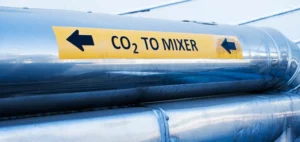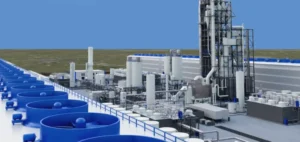Green ammonia could facilitate the energy transition as a low-carbon fuel or energy carrier.
But its high price is currently the biggest obstacle to its widespread commercialization.
Green ammonia: still too expensive
Certain difficulties have been highlighted by a new price series launched by Argus, a commodities market specialist.
It shows that the costs of green ammonia are more than twice those of conventional ammonia.
However, certain steps can be taken to ensure that decarbonized ammonia gradually replaces gray ammonia, which is derived from fossil fuels.
1,200 per ton
Argus has modeled a weekly price for green ammonia delivered to North-West Europe.
This model currently gives a theoretical value of $1196/t, more than double the conventional gray alternative.
In areas where green ammonia represents a promising substitute, the contrast is even more dramatic.
It is around four times more expensive than fossil fuel-based marine fuels.
Adrian Binks, President and CEO of Argus Media, said:
“We are delighted to have built a prize for green ammonia at this early stage of its market development. Green ammonia will play a key role in the energy transition. The additional transparency created by our price will help the market to develop effectively.”
Using hydrogen to produce decarbonated ammonia
Companies and energy consumers are increasingly interested in ammonia.
Indeed, it’s one of the most stable ways of transporting hydrogen, the cleanest fuel on the market.
Its combustion produces only water as a by-product.
However, ordinary (grey) ammonia is mainly produced from natural gas.
The process emits CO2, which negates the idea of using the resulting product as a low-carbon energy source.
As a result, 80% of grey ammonia is used as fertilizer, the remainder being consumed in various industrial processes.
Non-decarbonated ammonia consumes 5% of the natural gas produced worldwide
Today, ammonia production requires around 5% of the world’s natural gas consumption.
To completely decarbonize this industry, there is only one technically feasible alternative.
This is to use clean hydrogen to manufacture green ammonia.
Decarbonized ammonia is created by electrolysis, by passing renewable electricity through water.
Its carbon footprint is therefore essentially zero.
Stored energy can be extracted by direct combustion or fuel cell technology.
The future of marine fuel
There are many potential uses for green ammonia, but the most promising are marine fuels and power generation.
For example, theInternational Maritime Organization requires ships to reduce their CO2 emissions.
The aim is to reduce them by 40% by 2030 and 70% by 2050.
In theory, green ammonia would enable the maritime world to meet these targets in one fell swoop.
Indeed, ammonia would be ideal for powering the engines of large ships.
It has nine times the energy density of lithium-ion batteries.
And three times that of compressed hydrogen gas.
Such a transition would require the development of viable ship engines running on ammonia.
Ammonia-based refuelling systems would also have to be developed.
However, these projects are currently only at the prototype stage.
An energy carrier for renewable energies
Meanwhile, some countries, notably Japan, are pursuing the idea of green ammonia in power generation.
Ammonia is a stable carrier for hydrogen, making it easier to transport electricity over long distances.
Several Asian and European countries are also investing billions to create green hydrogen production facilities.
Green ammonia is bound to follow.
Cost reduction and state subsidies by 2030
Despite its high price, the Argus report claims that green ammonia will be the key element in the move away from fossil fuels.
The analysis predicts a significant reduction in production costs.
This will be the case as the technology develops and projects increase in size and number.
This will ensure that green ammonia can thrive and play its key role in the energy transition.
In the meantime, a combination of incentives and government regulations will no doubt be needed.
As with the development of wind and solar power, where costs have fallen by 80% in recent years.
If the industry takes initiatives to manufacture green ammonia and make it economically viable, massive subsidies will follow. Bloomberg estimates them at $150 billion by 2030.






















